

Medlar is a fruit tree that has long been forgotten but deserves to be rediscovered!
Main Medlar facts
Name – Mespilus germanica
Family – Rosaceae
Type – fruit tree
Height – 13 to 20 feet (4 to 6 meters)
Exposure – full sun
Soil – rather rich, well drained
Foliage: deciduous – Harvest: end fall – Flowering: end spring → early summer
Plant a medlar tree in your garden, and you’ll be the highlight of all neighbors admiring this uncanny but savory fruit-bearing tree.
Like most fruit trees, it is best to plant medlar in fall. This promotes root development before winter, thus enhancing recovery and regrowth in spring.
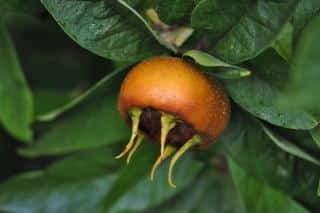
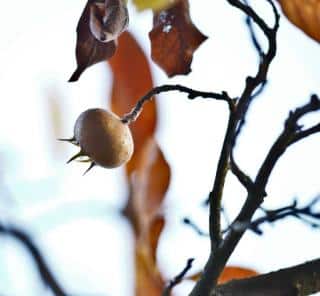
However, pruning it at any stage of its life won’t hurt if you wish to keep its size under control. Pruning will let you ensure it takes up only the space you plan for it in your garden landscape.
Heavy pruning every 5 to 8 years is better than yearly trimming.
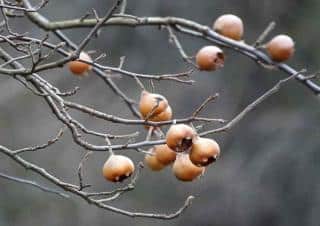
Pick the fruit by grasping it between thumb, index and forefinger.
The fruit sometimes bursts open, and even though it looks rotten, it is actually at its best with a taste that is surprising and sweet.
Our bird friends know the secret and quickly come to feast on them when the fruits starts bletting. Bletting means the fruit starts maturing to the point of turning mushy. Although for most fruit types this would be over-ripe, for fruits like medlar and blackthorn sloes, this is really the best time to eat them!
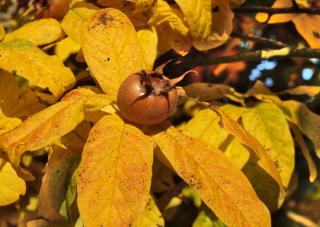
This fruit tree is well suited to harsh climates. Only one medlar species exists to date.
Its deciduous foliage is very dense, and the fruits appear early on in the year, in May. Harvest of these special fruits should wait until the first frost spells, as the fruit softens when faced with frost. This is called “bletted” fruit.
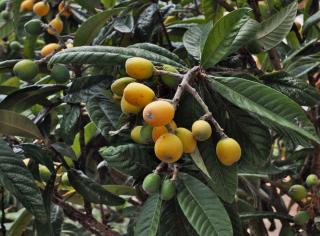
Medlars are typical ingredients for pies, clafoutis, jelly, liquor and even medlar wine.
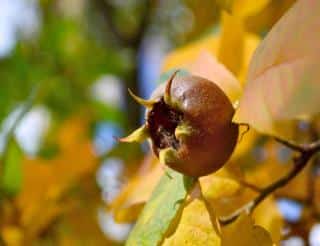
Most species of fruit trees often fall victim to aphids, and scale insects.
When harvesting, only harvest fruits that are very ripe on the tree. Once a fruit is detached from the branch, it won’t mature anymore.